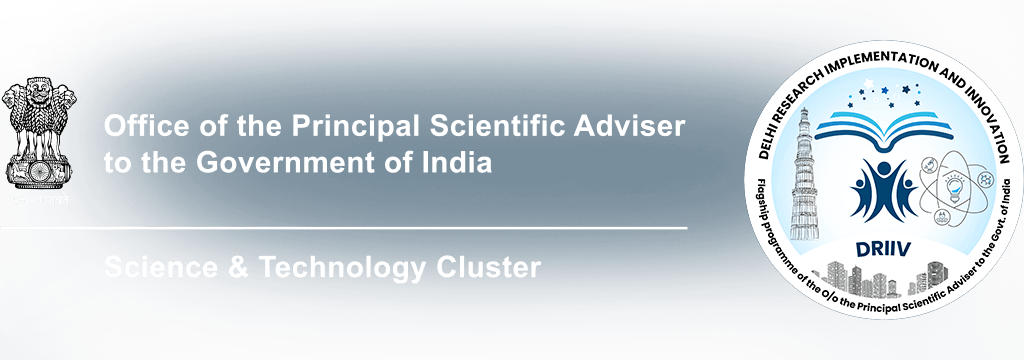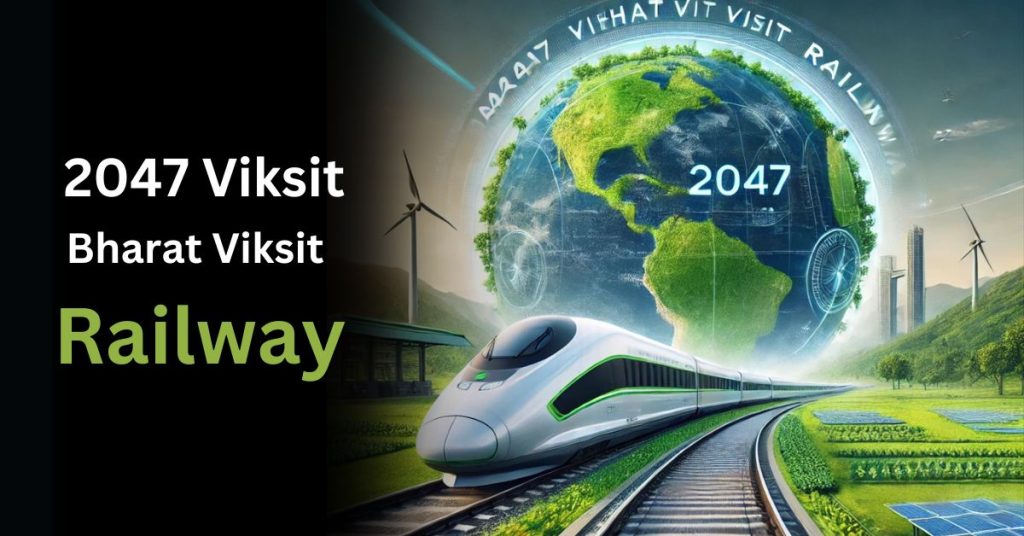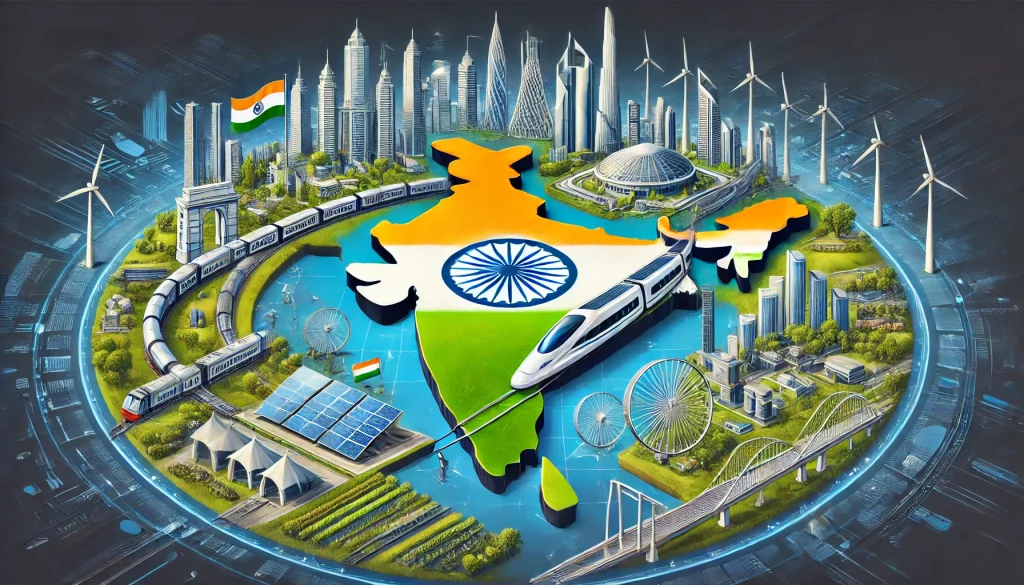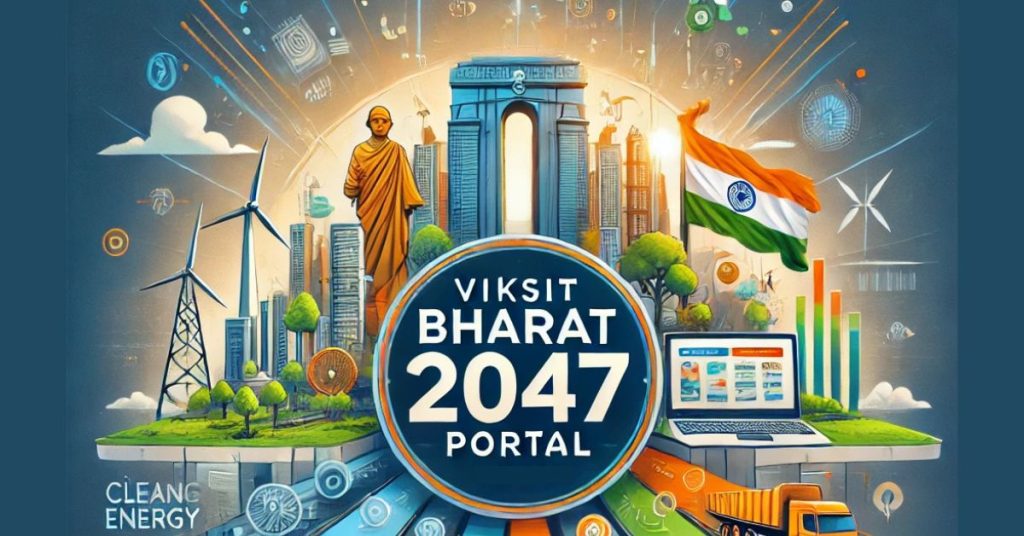India has set a big goal to become a developed country by 2047, and the Indian Railways will play a very important role in achieving this dream. The Viksit Bharat Viksit Railway vision aims to make Indian Railways modern, fast, safe, and efficient. This will help in improving travel, boosting businesses, and strengthening the country’s economy.
Indian Railways is already one of the largest railway networks in the world, carrying millions of passengers and goods every day. But to match the standards of developed countries, many improvements are needed. With this vision, the government plans to bring high-speed trains, better stations, smart technology, and safer rail travel for everyone.
Indian Railways: The Backbone of India
Railways are one of the most important parts of India. They connect cities, towns, and villages, making travel easy and affordable for everyone. Every day, millions of people use trains to go to work, meet family, or visit different places. For many, trains are the most affordable and convenient way to travel.
Not only do railways help people travel, but they are also a big part of the business and trade system in India. Goods like food, coal, and raw materials are transported through trains, helping factories and businesses grow. If India wants to become a developed country, it needs a strong and modern railway system, and that is the aim of the Viksit Bharat Viksit Railway plan.
What is Viksit Bharat Viksit Railway?
The Viksit Bharat Viksit Railway plan is a vision to make Indian Railways world-class by 2047. The goal is to make train travel faster, safer, cleaner, and more efficient.
A major part of this plan is to introduce high-speed trains that will reduce travel time. It also focuses on running trains on electric power to reduce pollution and cut fuel costs. Railway stations will be upgraded to provide modern facilities like clean waiting areas, better ticketing systems, and improved security.
Another important part of this vision is making railway travel safer. The government is working on using new technologies to prevent train accidents and ensure smooth operations. By 2047, Indian Railways aims to provide a world-class experience to passengers and businesses alike.
High-Speed and Bullet Trains
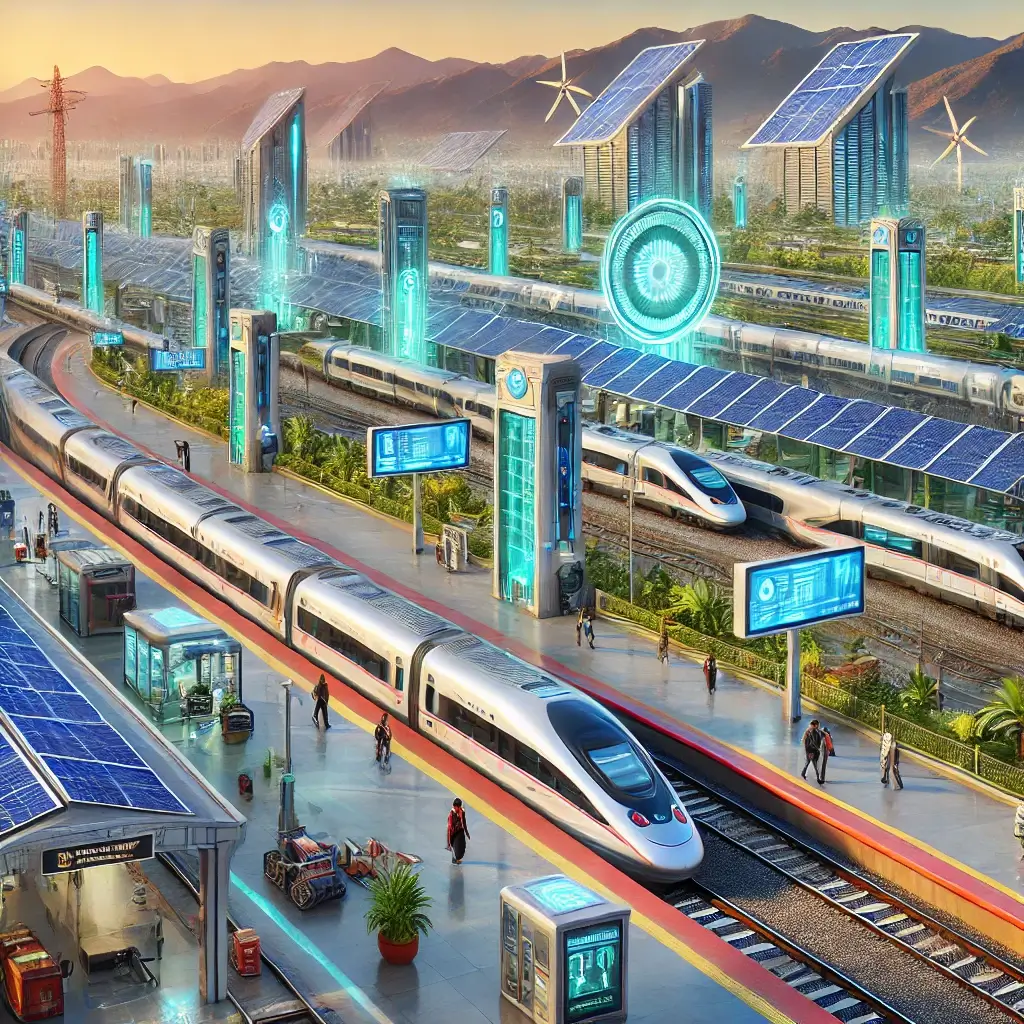
One of the biggest improvements in the future of Indian Railways will be high-speed trains. Currently, most trains run at an average speed of 50-70 km per hour, which makes long-distance travel slow. But with high-speed and bullet trains, people will be able to travel much faster, saving time and making journeys more comfortable.
India’s first bullet train project, the Mumbai-Ahmedabad Bullet Train, is already under construction. This train will run at a speed of over 300 km per hour, reducing travel time between these two cities to just a few hours. By 2047, many such bullet train routes will be developed across India, connecting major cities and making travel more efficient.
This will not only help passengers but also reduce the need for short-distance flights, saving fuel and reducing pollution. Faster trains will encourage more people to choose rail travel over road or air transport, making journeys cheaper and more convenient.
Electrification and Green Energy
Indian Railways is working towards making all trains run on electricity instead of diesel. This will help in reducing pollution and also save money spent on fuel. The goal is to make the railways completely electrified by 2030 and to use clean energy sources like solar and wind power.
Some steps that are already being taken include installing solar panels on train coaches and railway stations, using wind energy for power supply, and even working on hydrogen-powered trains. These efforts will make Indian Railways eco-friendly and reduce the carbon footprint.
Electrification will also make train travel faster and smoother. Electric trains can run at higher speeds and require less maintenance than diesel trains. By using renewable energy sources, Indian Railways will become one of the greenest railway networks in the world.
Modern and Smart Railway Stations
Railway stations are also being upgraded to match international standards. Today, many stations are crowded, lack cleanliness, and have outdated facilities. But under the Viksit Bharat Viksit Railway plan, railway stations will be transformed into modern transport hubs.
New stations will have better waiting areas, clean washrooms, improved ticketing systems, and digital information boards. Many stations will also have shopping centers, food courts, and even hotels inside them. The goal is to make railway stations comfortable and easy to use for passengers.
Security is also being improved. More CCTV cameras, automatic gates, and baggage scanning will be introduced to ensure passenger safety. By 2047, railway stations will not just be places where people catch trains, but well-equipped centers for travel, shopping, and business.
Improved Safety Measures
Train safety is one of the top priorities of Indian Railways. In the past, railway accidents have caused many deaths and losses. The goal for 2047 is to make Indian Railways completely safe and reduce accidents to zero.
To achieve this, the Kavach safety system is being introduced, which will help prevent train collisions by automatically stopping trains when needed. New signaling systems, stronger tracks, and modern bridges are also being developed to ensure safer travel.
Better training for railway staff, more emergency services on trains, and improved maintenance of railway tracks are also part of the safety plan. With these measures, train travel will become one of the safest modes of transport in India.
Smart Technologies in Railways
Technology will play a big role in transforming Indian Railways. By 2047, trains will be smarter and more efficient with the help of Artificial Intelligence (AI), automation, and digital systems.
AI will be used to monitor train movements, detect faults, and improve scheduling. The use of Internet of Things (IoT) devices will help track the health of railway tracks and engines, preventing breakdowns. 5G connectivity will provide passengers with high-speed internet on trains, making travel more enjoyable.
Automatic ticket checking, digital train schedules, and better customer service through apps and chatbots will make train travel easier and more convenient for passengers. With these advancements, Indian Railways will be one of the most modern railway networks in the world.
Faster and More Efficient Freight Transport
Railways are not just for passengers. They also play a big role in transporting goods. Currently, a large portion of goods is transported by trucks, which increases traffic and pollution. The plan for 2047 is to increase the share of goods transported by rail.
To achieve this, special Dedicated Freight Corridors (DFC) are being developed. These are railway lines only for goods trains, allowing them to move faster without slowing down passenger trains. Faster loading and unloading facilities and better warehouses will also help industries transport goods quickly and efficiently.
This will reduce transportation costs, help businesses grow, and support India’s economy.
Conclusion
The Viksit Bharat Viksit Railway vision is a big step towards a developed India. By 2047, Indian Railways will be faster, safer, cleaner, and more advanced. With bullet trains, modern stations, smart technology, and green energy, train travel will become more comfortable and efficient.
This transformation will benefit passengers, businesses, and the environment, making India a global leader in railway infrastructure. The dream of a developed India by 2047 will be realized, and Indian Railways will play a major role in this success.
Also Read:
- Viksit Bharat 2047 – A Vision for a Developed India
- Viksit Bharat 2047 Portal: A Vision for India’s Future
Frequently Asked Questions
What is the goal of Viksit Bharat Viksit Railway 2047?
The goal is to make Indian Railways modern, safe, and efficient by 2047. This includes high-speed trains, electrification, better stations, improved safety, and smart technology. The aim is to provide world-class train travel and boost India’s economy by improving passenger and freight transport.
How will bullet trains improve Indian Railways?
Bullet trains will run at very high speeds, reducing travel time between cities. They will provide a comfortable and fast alternative to flights and road travel. The Mumbai-Ahmedabad bullet train is the first step, and more such projects will connect different parts of India.
How will railways become safer under this plan?
Indian Railways will use advanced technology like the Kavach system to prevent accidents. Better tracks, modern signaling, automated systems, and well-trained staff will ensure safety. CCTV cameras, emergency response teams, and improved maintenance will also make train travel much safer by 2047.
How will the modernization of railway stations help passengers?
Modern railway stations will have better waiting areas, clean washrooms, digital ticketing, shopping centers, and security systems. These upgrades will make travel more comfortable and efficient. Stations will become travel hubs with better connectivity to other transport systems like metro and buses.
How will electrification help Indian Railways?
Electrification will replace diesel engines with electric ones, reducing pollution and fuel costs. Trains will run faster, smoother, and require less maintenance. Solar panels, wind energy, and hydrogen-powered trains will also be used to make railways eco-friendly and support India’s green energy goals.
